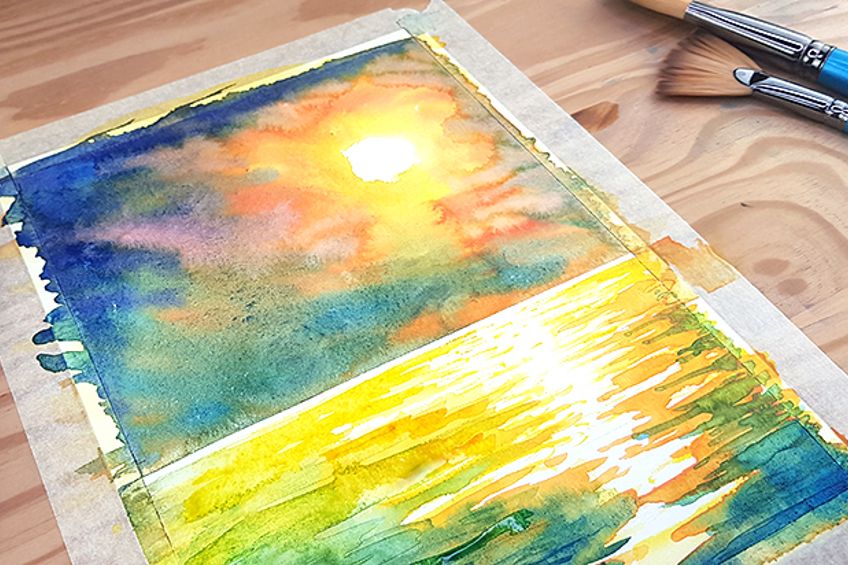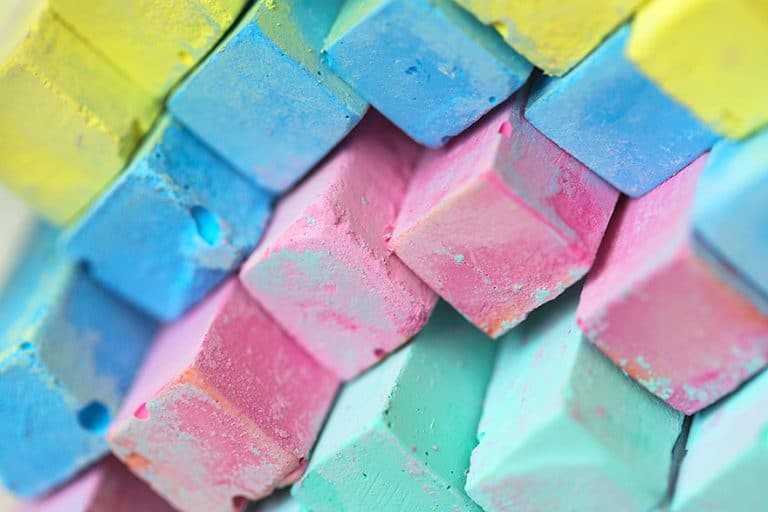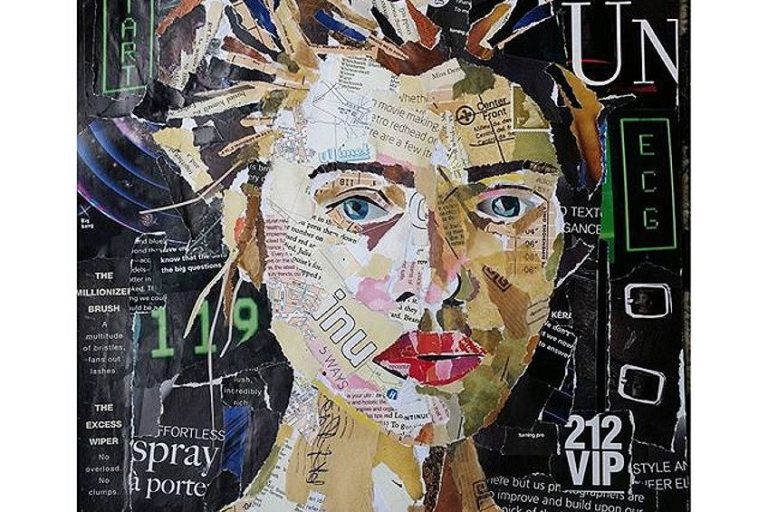How to Stretch Watercolor Paper – Stretching Watercolor Paper Easily
This post may contain affiliate links. We may earn a small commission from purchases made through them, at no additional cost to you.
Is stretching watercolor paper important and why do many artists feel it is necessary to follow through with this process? The watercolor paper itself is designed to work with watercolor paints, however, when applying washes and using techniques that require more water than usual, it can have an impact on the paper. The paper can still easily warp from excess water, and this is something you want to avoid. So, to solve this dilemma, we will be dealing with why and how to stretch watercolor paper.
Table of Contents
Reasons for Stretching Watercolor Paper
Warping or buckling paper can be frustrating when working with watercolors. The paint seems to pool and go where you do not want it to. Watercolor paper can hold a certain amount of water, but lighter-weight paper, under 300 grams might have a problem, especially if you are painting layers or applying more water than usual. Also, if you are using a large watercolor paper, for example, 9 inches by 12 inches, and its weight is less than the 300 grams mentioned, then stretching your paper is essential.
High-quality watercolor paper is made from cotton fibers, and commercial manufacturing of the paper aligns the fibers in a similar direction. So, when water is applied, the fibers expand lengthwise and become more random. The paper then dries and the fibers contract, but remain slightly random. This misalignment is what causes the paper to become uneven, or to buckle.
stre

Stretching the paper will eliminate this issue because when the paper dries, it is stretched tight and the paper remains flat, thus preventing an uneven surface and wrinkled edges. However, you can use a much heavier-weight paper, as this will not be as affected by the water. Many like to go through the process of stretching watercolor paper, as you can use as much water as you want and work as long as you want, and the paper will remain flat. So, the two main reasons for stretching watercolor paper include:
- If the paperweight is less than 300 grams
- When using large watercolor paper
Instead of having to stretch watercolor paper, there is another quicker and easier option. You can try using a watercolor block. These blocks have several watercolor sheets that are bound on all four sides by gum. The blocks are ideal for those artists on the go and prefer to do Plein air sketching. The gummed paper block holds and keeps the paper stretched and should not buckle when painting. Once you have finished painting on the first sheet of paper, you can remove it by using a palette knife around the edge.
There are a few disadvantages to watercolor blocks, for one, they are quite expensive and are not the best option if you want to apply heavier washes. Also, you can only work on one painting as the paper sheet you are working on needs to dry before you can remove it. Another option is to use a watercolor board which will not warp if you are applying more water, but this is also expensive. So, why not rather give stretching watercolor paper a try? It is always exciting to learn a new skill, and once done, you might even wonder why it took you so long to do it in the first place.
As mentioned, commercial paper fibers are generally aligned in the same direction, but handmade paper starts with a more random alignment. This allows the handmade paper to warp less and using thicker paper will not require stretching at all.
How to Stretch Watercolor Paper
Stretching watercolor paper can be done in a number of ways, but always be aware of the fast way of doing things. Most times, doing something properly takes time and is not something to be rushed. We will be mentioning how to stretch watercolor paper with masking tape and using a hairdryer, but this is not necessarily the best and most effective way to stretch watercolor paper. So, the first step is to learn how to prepare the watercolor paper. Stretching watercolor paper always involves two main procedures, soaking the paper in water and then stretching.

The Wetting Paper Process
Once you have your paper, it is time to soak it. You can either use a spray bottle to spray the water, or a brush or sponge to wet the paper. Another option is to place the paper completely in warm water.
Spraying, Sponges, and Brushes
These methods of wetting paper do take longer. When using a brush or sponge, you need to be careful when wiping the paper as you can damage the fibers if the process is done too firmly. Place your watercolor paper onto a clean board, spray or brush the water onto the paper.
Finally, turn the paper over and wet the paper again until it is well soaked.
Fully Immersing the Paper in Water
You will need a big enough container so that you can immerse the paper without problems. You can use lukewarm or cold water; the warmer water simply increases the time it takes for the fibers to expand. Hold the paper on each side and pull the paper through the water, making sure the entire sheet is covered. Repeat until the paper is fully soaked. Many artists prefer this method as you are less likely to damage the paper surface.
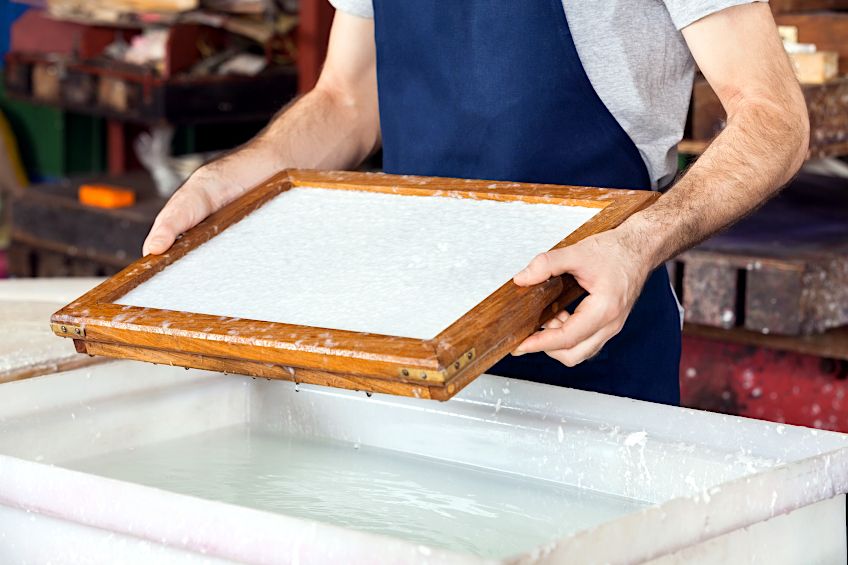
Recommended Soaking Times
The paper must be soaked properly to avoid any issues later on. Soaking too much will cause the paper fibers to expand substantially, and when it dries, the paper will contract and may do so quite forcefully. This means the paper can tear in the process. Too little soaking and the paper will appear flat and rigid, but as soon as you begin painting watercolor washes, it will still warp. The typical amount of time is from five to ten minutes. If the paper begins to appear or feel limp, it is time to remove it. When wetting paper and stretching it, you should make sure the paper you use is of high quality.

Naturally, the thicker the paper, the more time is needed to soak it. So, you can start with five minutes with 300-gram paper and work up to ten minutes the thicker the paper is. Any thinner paper will then require less than five minutes. Commercial paper is also covered with treatment, which is known as sizing.
The treatment helps to improve the paper’s performance, so you also do not want to remove this entirely by over-soaking the paper.
Stretching the Watercolor Paper
Next, the soaked paper can be placed on a flat and firm surface, which is at least one inch bigger than the paper. The space left will be where your tape will go to hold the paper on the board. Once the paper is flat on the board, you can wipe with a sponge, to get rid of any air pockets. Remember to place the paper the correct way up. The watermark should help you in this instance if you are unsure. Try to position the paper correctly the first time, as it will stick and is difficult to adjust.

A Few Popular Materials Used as a Stretching Board
There are a few choices when it comes to the watercolor stretching board. Generally, the surface should be smooth. When using more porous surfaces, you might consider using half an inch of acrylic primer to create a less porous surface. For example, the plywood can do with a layer of primer.
- Gator Foam Board: this is a light, yet firm and impermeable surface
- Marine-grade plywood
- Canvas
- Paper Stretcher
- Plexiglass
When securing the paper to the watercolor stretching board, there are different ways to do it. The more popular method is to use gummed tape, this tape is water activated and is easily removed. The next method is to staple the paper to the board, preferably using a stapler that can handle the process. Whatever method is used, always make sure the board surface is clean before laying the paper down.
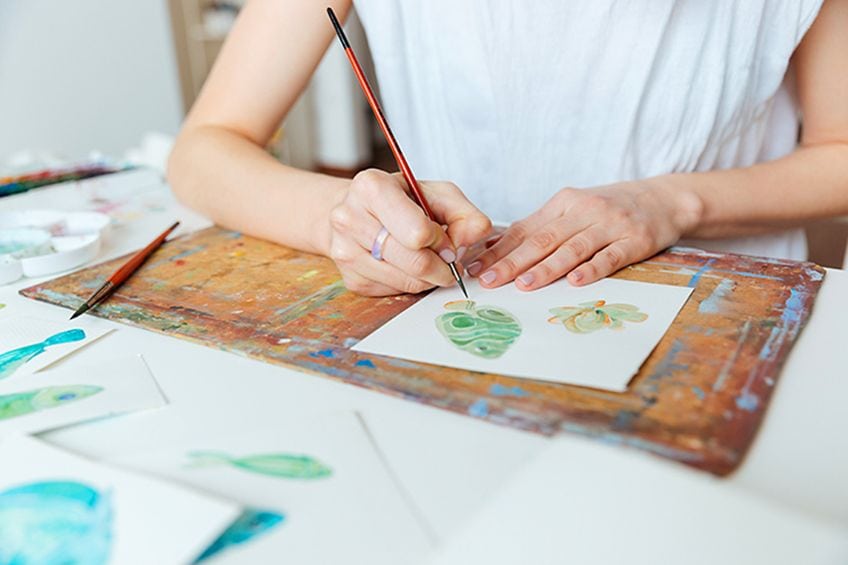
Once the paper has been attached to the watercolor stretching board, it needs to dry before you can use it. The best way to do this is to leave the paper in a dry and warm place. You can leave the paper for at least a day to dry. When drying, make sure the board is lying flat, do not place it upright to dry as the moisture can sink to the bottom, and loosen the tape. If the paper still seems damp or cold, you can leave it a bit longer. As this entire process can take some time, many artists prepare several stretched papers in advance. These can then be stored and used when you are ready to paint.
Some may use a hairdryer to speed up the process, but to get the best result, it is a good idea to have a little patience, as the paper needs to dry evenly.
Methods of Attaching the Watercolor Paper
As mentioned, there are a few methods you can try to secure the paper to the board. Some might be simpler to complete than others, but they all provide a similar surface to paint on. You may want to attempt all of them to find the method you prefer, but the first method is usually the most popular. The first method is the most popular and is quite easy to complete.

Using Gummed Tape
The gummed tape is a special watercolor tape. Many prefer using what is known as a rigid gator board, yet lightweight to stretch their paper on. But whatever board you use, always make sure it is clean. Once you have soaked your paper, position it onto the board. The watercolor tape or gummed tape is water activated, so you will need to wipe a damp sponge down the cut piece you are going to be using. Do not rub or wet it too much, or the glue will come off completely.
To help with placing the watercolor tape more accurately, you can draw some pencil lines about a quarter of an inch around the edge of the paper.
The watercolor tape is much more effective than ordinary masking tape, as it stretches with the paper. When moving over your paper to place the tape, try not to let any of the wet glue drips onto the paper. Any drops that fall onto the paper, will create blotchy marks when you start to paint. Make sure to tape down your paper on each side. Some artists also staple the paper for added strength, because as the paper dries, it can pull at the tape and sometimes does not effectively hold the paper in place.

Once you are finished with taping your paper, you can lay the board flat to dry. After the paper dries, you can begin painting. To remove, you can do this by using a knife to cut the edges of the paper. If you try to peel the tape away, it might tear the paper. Although, you can try to peel the tape off by dampening it slightly.
Using a Canvas Frame
You will need to get an empty canvas for this method. You can buy your own stretcher bars and create a frame from scratch, or simply purchase a canvas from the art store and strip the canvas off. Once again, you first soak your paper and then place it with the watermark facing down onto a cotton towel. Take the canvas frame and position it onto the paper and begin to wrap it around the frame. You should use a heavy-duty stapler to fasten the paper to the frame.
Work your way around and then end with neat hospital corner folds and secure these.
Once done, leave to dry laying flat for at least several hours, and try not to hasten the process by using a heat source. Once the paper is dry, you should have a perfectly taut stretch canvas. You can then use some tape to form a half-inch border around the paper before you start painting. Once you have finished painting, you can then remove the staples and then the paper from the frame. Cut the paper on the fold, and there you have your beautiful painting.
Watercolor Paper Stretcher
This is a slightly more expensive method, but it creates the perfect rigid surface for painting. There are grooves all around the edge of the board, and once you have soaked the paper and placed it on the board, long rubber strips are placed over the folded paper and knocked into the grooves with a hammer. Adding some candle wax into the grooves beforehand can make it easier to remove the paper later. In this case, since the paper is held so firmly, a hairdryer can be used to dry the paper faster.
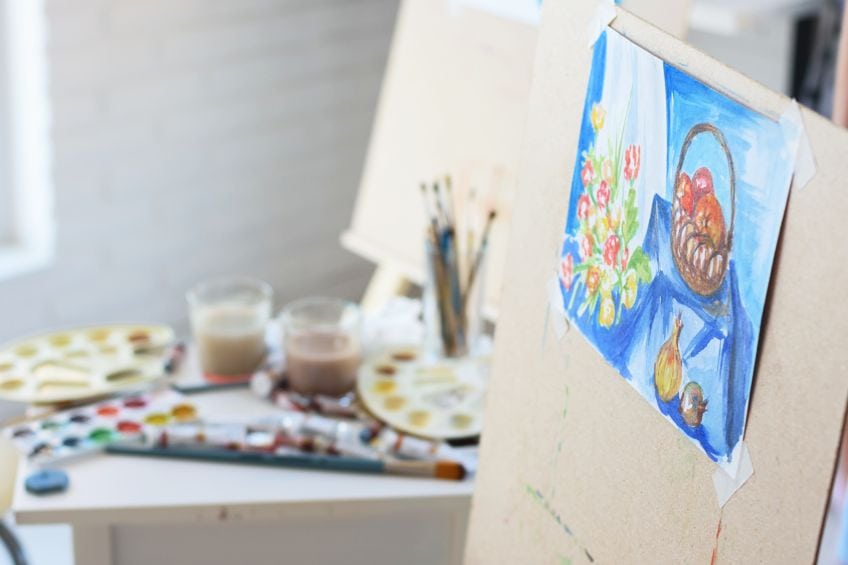
How to Stretch Watercolor Paper With Masking Tape
Some might recommend this method as it is quick and easy to do. However, this method does not work out in practice as it does in theory. Simply tape the paper onto your board, then wet the paper using a soft brush or sponge. Make sure the entire paper surface is covered and then allow to dry or use a hairdryer for faster results.
This is the wrong way to stretch paper, as you cannot tape the paper before wetting it.
This is counterproductive, as the paper expands when wet. It may appear to go flat when drying with a hairdryer, but once you start painting, the paper will still warp and buckle. If you want the job done correctly, there is no real shortcut. So, rather follow the proper methods and get the best results.
Can You Flatten a Warped Painting?
Maybe, you have done your painting and did not feel it necessary to stretch your watercolor paper. Now you are sitting with a painting that is a bit less than perfect. There might be a way to save the painting if you do the following. First, spray the back of the painting with some water to dampen it. Then, put it between two pieces of paper that you position onto a piece of board. Place something heavy on top, such as a few books, which should keep the paper even. Leave to dry for several hours. Another method is to use an iron in a low heat setting. Dampen the paper then move the iron over the back of the painting, make sure there is a towel between the iron and painting surface for added protection.

Some Helpful Tips on Stretching Watercolor Paper
Stretching watercolor sheets might be a daunting task for some, but if you follow the various methods and use a bit of patience, the outcome should be quite impressive. Below are some tips on how stretching paper should and should not be done.
- Always wash your hands before starting, as you do not want to dirty the paper while working with it. You may even want to use gloves for the process.
- Preferably use cool water, as this helps prevent the loss of the sizing.
- Try not to soak in the water for too long, as this could also remove the sizing.
- A sponge is usually used to smooth the paper and to wet the watercolor tape, consider using two different color sponges so you do not confuse them. You do not want to get gum on your watercolor paper.

- The best option is watercolor tape or gummed tape instead of masking tape, and a heavy-duty stapler instead of drawing pins.
- First wet the tape if you want to remove it once you are finished painting, and peel it off very carefully. However, cutting the paper edges might be best.
- You can use plexiglass as a board, this makes it easy to trace images onto the paper if using a lightbox as it is transparent.
- Do not moisten the watercolor tape too much as this will remove the gum.
- Preferably, leave the board with the stretched watercolor paper lying flat to dry.
Stretching your own watercolor paper can really bring you closer to the painting process. Although this process may be a little daunting before you get going, with our tips and tricks and methods outlined, you will easily be able to stretch your own watercolor paper.
Frequently Asked Questions
Is Stretching Watercolor Paper Needed?
It is best to stretch watercolor paper that is 300 grams or lighter if you are preparing to use heavy washes for your painting. Once stretched, the paper remains flat, even if you use a lot of water. However, you can also use a watercolor block or heavier watercolor paper.
How to Prepare Watercolor Paper?
When it comes to preparing the paper, there are two main processes you can follow. The first is to wet the paper by immersing it in water, and the second is to then stretch the paper using various methods.
How Long Should You Immerse the Watercolor Paper in Water?
You do not want to leave the paper in the water for too long. So, for lighter-weight paper soak for about three to five minutes and heavier paper from five to ten minutes. You should be able to gauge when the paper is ready as it will begin to feel limp, like a wet cloth.
Can Masking Tape be Used for Stretching Watercolor Paper?
You can try using masking tape, but the results might not be as expected. Rather use gummed tape or watercolor tape, which will adjust with the paper as it dries, unlike the masking tape.
Matthew Matthysen is a multidisciplinary artist. He completed his fine art degree, majoring in History of Art and Contemporary Drawing Practice at the University of Witwatersrand, South Africa. Before joining acrylgiessen In 2020, Matthew worked part-time as an art teacher at Reddford Blue Hills High school. Matthew creates drawing and painting tutorials for acrylgiessen and captures them not only photographically and in written form. He also records the creation of his works in his own creative studio as in video format, from which later with a voiceover and a video editor also drawing tutorials for the Youtube channel of acrylgiessen are created.
Learn more about Matthew Matthysen and about acrylgiessen.
